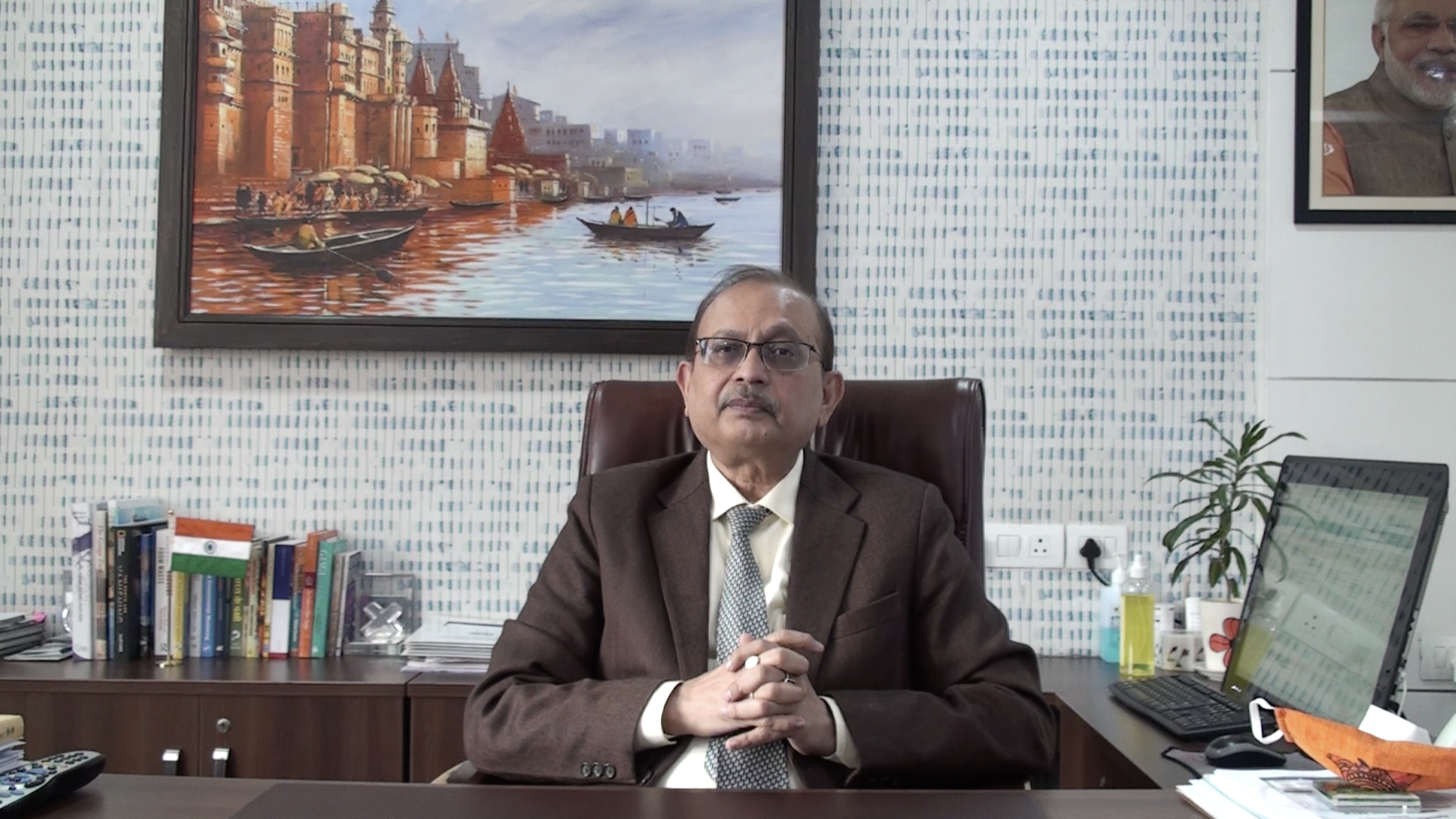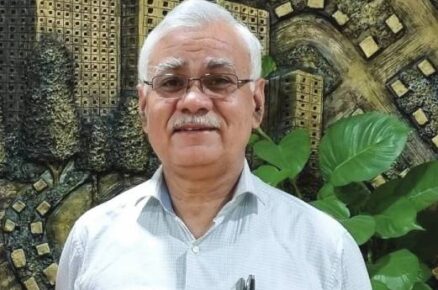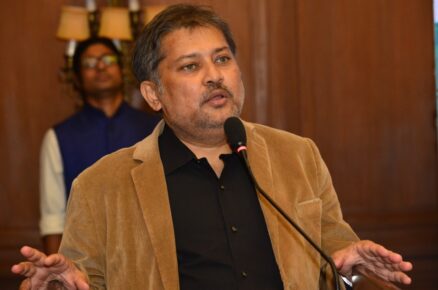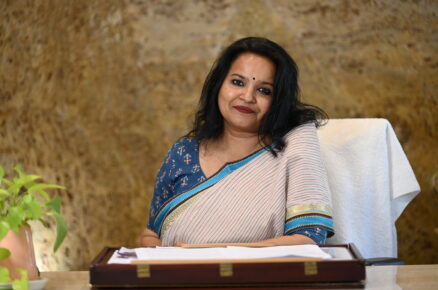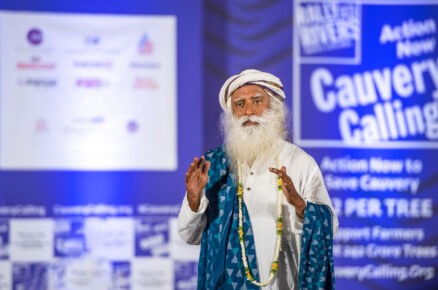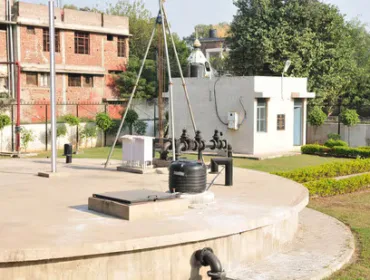Shri Rajiv Ranjan Mishra (IAS), Director General,
National Mission for Mission Ganga
Namami Gange mission aspires to rejuvenate Ganga and its tributaries by interventions involving pollution abatement (Nirmal Ganga), improving ecology and flow (Aviral Ganga), strengthening people-river connect (Jan Ganga) and promoting knowledge management (Gyan Ganga). The major driver to conserve and protect the river’s overall health is urban development as cities are often held responsible for polluting rivers which has adversely impacted urban wetlands and floodplains. Therefore, interventions focusing on the development of river sensitive cities can play a vital role in the rejuvenation of Ganga.
Water Digest (WD): Please tell us something about the newly launched initiative aimed at ‘Making Water Sensitive Cities in Ganga Basin’ by the National Mission for Clean Ganga in collaboration with the Centre for Science and Environment?
Rajiv Ranjan Mishra (RRM): The National Mission for Clean Ganga (NMCG) is an integrated mission, which operates in conjunction with various Departments and Ministries for the protection, conservation, and rejuvenation of River Ganga. Guided by a holistic approach, the focus has been on the riverine ecosystem, including components such as pollution abatement, solid and liquid waste management, biodiversity, afforestation, wetland conservation, agribusiness, groundwater management, etc.
Water Sensitive Urban Design and Planning is an emerging concept that strives to minimise hydrological impacts of urbanisation and built environment on the natural environment. This is achieved by optimizing utilisation of water and managing the various water verticals such as drinking water, stormwater, surface water, groundwater and wastewater. The concept is in alignment with the vision of NMCG, wherein several endeavours have been undertaken to mainstream a river sensitive approach in city masterplans. We are working with National Institute of Urban Affairs (NIUA) and Town and Country Planning Organisation (TCPO) to develop and translate their ideas for planning of river cities.
Our new initiative ‘Making Water Sensitive Cities in Ganga Basin’ launched in collaboration with the Centre for Science and Environment, is another step taken in this direction. A first of its kind, the initiative is a part of NMCG’s ongoing efforts to ensure convergence with other national flagship missions such as Swachh Bharat Mission (Urban), HRIDAY, NULM, AMRUT, Jal Jeevan Mission (Urban), Atal Bhujal Yojana and Smart Cities. The key focus areas of the programme include urban water efficiency and conservation, decentralized wastewater treatment and local reuse, urban groundwater management and urban waterbodies / lake management. Under the initiative, over 40 training programmes will be conducted over a period of three years, along with the development of various knowledge products. It will include residential trainings, online trainings, field visits and webinars etc. In the initial period, the project will be rolled out in three-four pilot cities in the Ganga basin and then scaled up in a phased manner.
WD: What is the progress and development of the running 50 MLD sewerage treatment plant under the Hybrid Annuity-based PPP model at Varanasi, Uttar Pradesh?
RRM: At NMCG, concerted efforts have been made to usher in a paradigm shift for the holistic management of the River Ganga basin. One of our key innovations has the been the introduction of the Hybrid Annuity Mode (HAM) under the PPP model, wherein the development, operations and maintenance of the Sewerage Treatment Plant (STP) will be undertaken by a Special Purpose Vehicle created by the winning bidder at the local level. Under the model, only 40% of the capital cost is paid on completion of the construction of STP. The remaining 60% is released as annuities along with interest and O&M charges in the next 15 years. The release of the payment has also been linked to compliance with discharge standards. With the introduction of the HAM model, a transformational change has been witnessed in the sewerage sector as it has optimised performance of the assets by increasing accountability and ownership.
With regard to the 50 MLD STP in Varanasi, the project has been completed and is currently in the trial phase. The project has enabled us to treat a significant amount of the sewage load in AssiNallah. You would be happy to know that a substantial progress has been made in Varanasi, wherein from just 100 MLD STP treatment capacity in 2014, the city can now cumulatively treat 410 MLD wastewater every day. This quantity is adequate to meet the sewerage treatment demands of the city till 2035.
WD: What is the next big thing being planned by the NMCG, which can help in achieving the goal of cleaning river Ganga within the specified time period?
RRM: As mentioned earlier, at NMCG we have focused not just on pollution abatement but worked for the protection, conservation, and rejuvenation of the entire River Ganga basin. We have made substantial progress in terms of creating sewerage treatment capacities in the cities along the river by sanctioning158 projects to cumulatively create 4949 MLD treatment capacity. The next step ahead in this direction, has been the commencement of our work in the tributaries as well. Already we have sanctioned 43 STP projects, which will create 2772 MLD treatment capacity.
Along with this, we have initiated deliberate interventions especially in the urban sector. In addition to the Water Sensitive Urban Design and Planning initiative, we have developed a framework ‘Strategic Guidelines for Making River Sensitive Master Plans’ in collaboration with National Institute for Urban Affairs.
The framework will enable urban planners and cities to develop river sensitive master plans, which will enhance the river city connect and help both rivers and cities to have a grow sustainably. At present, Kanpur is developing a master plan based on the framework and we will be encouraging other Ganga cities to follow suit as well. During the meeting of National Ganga Council, the Hon’ble Prime Minister had proposed the idea of Arth Ganga, which is a unique intervention to clean and protect the river by promoting economic development and livelihood generation activities based on Ganga. Linking livelihood to the river, will not only enhance the people-river connect and protect the river but will also help build a brand Ganga at the international level.
We have achieved significant progress in terms of organic farming, establishment of the first of its kind Ganga museums, sanction of projects for religious and eco-tourism, etc. We will be working further in this direction and expect to achieve milestones soon. Likewise, we have devised focussed intervention for afforestation, biodiversity, small river rejuvenation, and groundwater management.
WD: Small rivers and water bodies deserve equal attention and consideration. Your proactive efforts towards the rejuvenation of smaller rivers in India are a welcome step. Can you please elaborate on it?
RRM: The building blocks of NMCG rest upon its holistic approach of managing an integrated riverine ecosystem including its tributaries, wetlands, groundwater, biodiversity, etc. For this, it was crucial that a bigger picture of river-sensitive sustainable urbanisation was adopted wherein wetlands, lakes, and other water bodies were incorporated as well.
For instance, for small rivers and rivulets, we have undertaken several interception and diversion projects in rivers such as River Rispana and River Bindal in Uttarakhand, River Mahe in Bihar, etc. NMCG has also been closely working with State Wetland Conservation Authorities, Wetland Division of MoEF&CC and Wetland International India for wetland conservation in the basin.
It has launched a toolkit called ‘Urban Wetland Management Guidelines in collaboration with the School of Planning and Architecture, Delhi to educate stakeholders on various topics such as, mapping wetlands/ water bodies and their attributes, identifying interlinkages with groundwater, urban development alongside the wetlands, land suitability analysis, impact of development and trends in the city master plans, etc. The toolkit has also been rolled out as pilot project in Bhagalpur which is downstream to Ganga and a water rich area.
WD: Which key initiatives have been taken in terms of technology upgradation and technology adoption under NMCG? What are the new funding sources being tapped?
RRM: In terms of technology upgradation or adoption of technologies, our approach has primarily been agnostic. For instance, with regard to STPs our goal has been to achieve ultimate outcome and ensure compliance with discharge standards. Thus, we do not endorse any particular technology to the operators or technology providers but would recommend if they are mentioned in the Central Public Health and Environmental Engineering Organisation (CPHEEO) manual.
However, in case new technologies are used, which have not been mentioned in the manual, we ask the operators to ensure and closely monitor the performance security of the STPs. A good example of a new technology giving excellent results would be the use of Organica Food Chain Reactor for wastewater treatment in 3 STPs in Prayagraj, Uttar Pradesh. Operated by a consortium of Adani Enterprises and OrganicaTechnlogiakZrt, the technology is a recently developed global environment friendly technology and has led to a smaller geographic footprint, significant savings in both capital and operational costs, less energy, high resilience to changes in influent, robust treatment and nutrient removal characteristics, etc.
Other than this, we have been using technologies in our other projects as well. We have launched a path-breaking project along with Survey of India (SoI) for the generation of high-resolution DEM and GIS ready database for part of river Ganga using LiDAR mapping. DEM models provide valuable information for use not only in making urban river plans but also for identifying the baseline of river flood plains and regulating them for their restoration and preservation. Other projects include- innovative technologies for both in-situ and ex-situ treatment of drains, reconstructing the Ganga of the past from Corona archival imagery with IIT Kanpur, mapping of microbial diversity in Ganga with NEERI, etc.
With regard to funding, we have received 400 million USD funding from World Bank for Ganga 2.0. An innovative guarantee scheme has also been introduced in the wastewater sector through World Bank assisted Ganga 2.0 project to further build confidence of the investors. Additionally, with the introduction of the HAM PPP model, government/private sector commercial banks such as IndusInd, SBI, etc. have also begun to invest in various projects indirectly through sanctioning loans to the concessioners of the projects. We are also encouraging and getting a good response for CSR contribution for certain activities of Namami Gange.
WD: How can the experiences of NMCG be used to replicate efforts for other rivers in the country?
RRM: River Ganga basin is the largest in the country, comprising almost over 40% of the population. The inherent diversity of the basin, whether it terms of hydrology, ecosystem, culture, biodiversity, etc. made our work both challenging and exciting. It has been an experiential learning for us as well. Given the success of our projects, efforts are being made to expand the scope from the existing Ganga and its tributaries, to other rivers in the country. The 4-pillar approach, i.e., Nirmal Ganga, Aviral Ganga, Gyan Ganga and Jan Ganga that has been adopted in NMCG will be used for the rejuvenation of identified rivers as well. In parallel, we are also striving to replicate and scale the existing models such as water sensitive urban design and planning, river city alliances, Arth Ganga, etc. in other rivers.
WD: Would you like to give any message?
RRM: The 6th IPCC Assessment Report clearly shows that there has emerged a need for a new approach to climate policy, wherein water cycle must be given centre stage. It is imperative to address the risks imposed by water and strategise for long terms solutionsat the earliest. And this is the message I would like to give to the readers- recognise the criticality, acknowledge the tradition and practices of our ancestors and proactively undertake steps to restore, protect and conserve our rivers and water bodies. The journey has to start with respecting water, which would lead to better management and keeping them healthy and rejuvenated.





